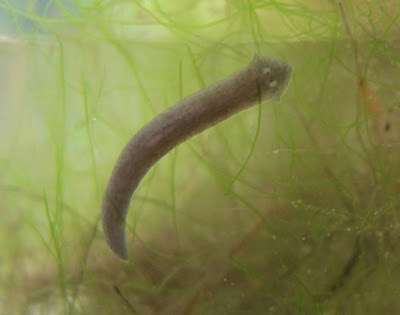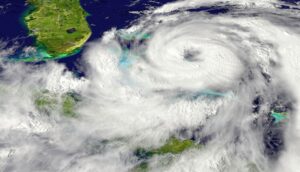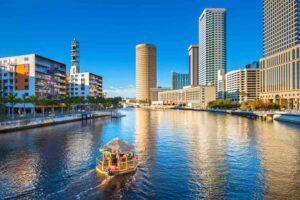
How a Crossed Eyed Worm can Change Mankind Forever!
Planaria are a 400 million year old genus of flatworms belonging to the class Turbellaria, renowned for their remarkable regenerative abilities. These aquatic or semi-aquatic creatures are characterized by their elongated, flat bodies and distinctive triangular-shaped heads with two prominent cross eyespots. Their unique biological features and simple but versatile anatomy make them valuable models for scientific research, particularly in studies related to developmental biology, aging, and tissue regeneration.
Planaria, often known for their remarkable regenerative abilities, possess what many consider “magical” qualities, although they are purely biological and scientific in nature. These flatworms, belonging to the class Turbellaria, have the ability to regenerate complete organisms from only a fraction of their bodies. This capability is largely due to their abundant pluripotent stem cells, known as neoblasts, which can transform into any cell type required for regeneration.
The magic of planaria extends to their potential applications in scientific research, particularly in the fields of developmental biology and regenerative medicine. Scientists study planaria to understand fundamental processes of tissue regeneration, which could lead to advances in human medicine, potentially influencing treatments for injuries and degenerative diseases. Their simple structure and powerful regenerative capacities make them ideal subjects for studying the complex mechanisms underlying cellular regeneration and the re-establishment of body plans.
Planaria’s regenerative abilities are not just limited to growing back parts of their bodies; they can also undergo asexual reproduction through a process called fission. In this process, a planaria constricts itself around the middle and eventually splits into two parts, each of which regenerates the missing half, thus forming two complete organisms. This unique method of reproduction allows planaria to rapidly increase their numbers without the need for a mate.
Moreover, recent studies have discovered even more intriguing aspects of planaria regeneration. For instance, researchers have found that these worms can regenerate their heads and brains, and amazingly, they can recover their previous memories after regeneration. This suggests that their memories might be stored in a way that isn’t fully understood, potentially decentralized throughout their bodies.
The study of planaria has also challenged and expanded our understanding of what is possible in biology, offering new models of how cells communicate and organize during regeneration. Scientists continue to explore the genetic and molecular pathways involved in these processes, hoping to apply these principles to other species, including humans. This research could lead to breakthroughs in healing wounds, regrowing lost limbs, and designing better methods of reconstructive surgery, drawing directly from the “magical” properties of these fascinating creatures.
The age of individual planaria in the wild can vary, but they are particularly notable for their potential to achieve biological immortality through their regenerative capabilities. Planaria can continuously renew their cells thanks to the presence of pluripotent stem cells, which allows them to effectively replace aged or damaged cells and avoid the accumulation of cellular damage that typically leads to aging in other organisms.
In laboratory conditions, planaria have been observed to maintain their regenerative abilities for extended periods, which suggests they could potentially live indefinitely under ideal circumstances. However, the natural lifespan of planaria in the wild is harder to determine due to factors like predation and environmental conditions.
Thus, while there isn’t a specific typical lifespan for planaria due to their regenerative abilities, under optimal conditions they can theoretically avoid senescence, the normal process of aging, making them a subject of interest for studies on longevity and biological immortality.
Exploring the Magical Biology of Planaria and Its Implications for Medicine
Planaria, a genus of flatworms, have captivated scientists with their seemingly magical abilities that are deeply rooted in biology. These creatures are renowned for their extraordinary regenerative capabilities, potential for biological immortality, and unique reproductive methods. Such traits not only challenge our understanding of biological limits but also hold promising implications for the field of medicine, especially in regenerative medicine and aging.
Regeneration and Its Medical Potential
Planaria are most famous for their ability to regenerate any part of their body from even a very small fragment. This remarkable ability encompasses the regeneration of vital organs and complex structures such as the brain. What makes this particularly fascinating is that planaria can recover their previous memories after regeneration, suggesting a decentralized memory storage system.
The study of planarian regeneration offers a window into cellular repair and renewal processes that could be harnessed in human medicine. Understanding how planaria regrow missing or damaged tissues could lead to breakthroughs in tissue engineering and regenerative medicine. For example, scientists are exploring how these mechanisms might someday allow the regeneration of human tissues or organs damaged by injury or disease.
Biological Immortality: Insights into Aging
Planaria exhibit what is termed biological immortality through their ability to continuously renew their cells, thereby avoiding the aging process that leads to senescence in most other organisms. This characteristic could provide critical insights into the aging process in humans, potentially guiding the development of therapies that delay aging or treat age-related conditions. By studying the cellular and molecular pathways that facilitate this immortality, researchers hope to uncover strategies that could extend human healthspan and combat degenerative diseases.
Asexual Reproduction and Cellular Dynamics
Planaria can also reproduce asexually through a process called fission, where they split into two parts, each of which regenerates into a complete organism. This mode of reproduction is not only a marvel of biological efficiency but also serves as a model for understanding cellular developmental pathways and stem cell dynamics. Insights gained from studying planarian fission could influence advancements in cloning technologies and stem cell therapies, which are pivotal in treating a variety of diseases and injuries.
Neoblasts: The Powerhouses of Planarian Magic
The key to planaria’s regenerative magic lies in their neoblasts, pluripotent stem cells capable of differentiating into any cell type. These cells are central to the worm’s ability to regenerate and reproduce asexually. In medical research, neoblasts are studied to improve our understanding of stem cell therapies, including methods for cultivating stem cells for transplant and exploring their role in cancer where cell differentiation processes go awry.
Memory Retention and Neurological Research
Perhaps one of the most mystifying aspects of planarian biology is their ability to retain memories post-regeneration. This phenomenon suggests potential decentralization in how memories are stored, which could revolutionize treatments for neurological diseases, such as Alzheimer’s, or help in developing recovery strategies for patients suffering from brain injuries.
The study of planaria opens up a fascinating realm of biological research with significant implications for human medicine. These flatworms not only challenge our understanding of what is biologically possible but also inspire potential medical innovations that could transform how we treat a wide range of health issues. As research progresses, the magical traits of planaria may lead to real-world applications that extend lives, enhance health, and regenerate lost or damaged tissues, mirroring the remarkable capabilities observed in these seemingly simple creatures.



